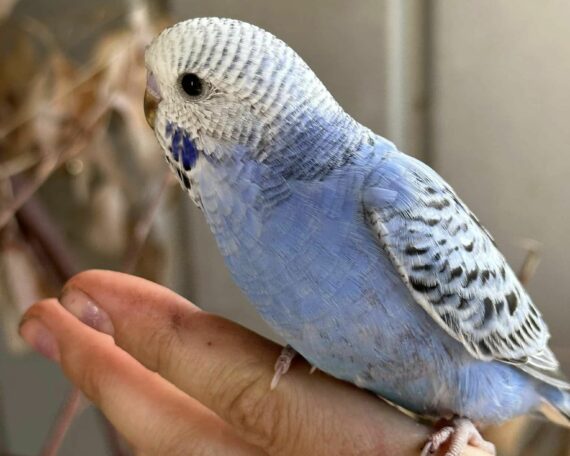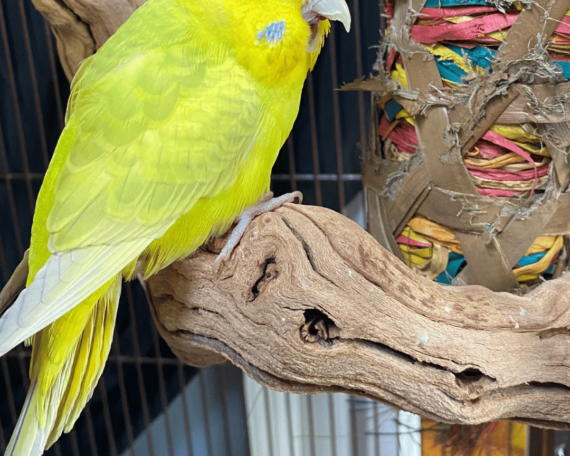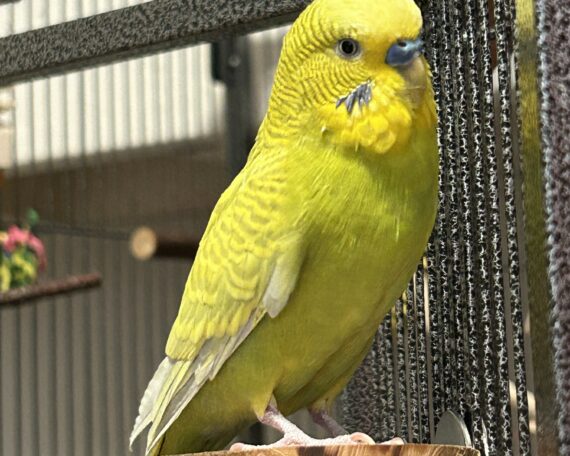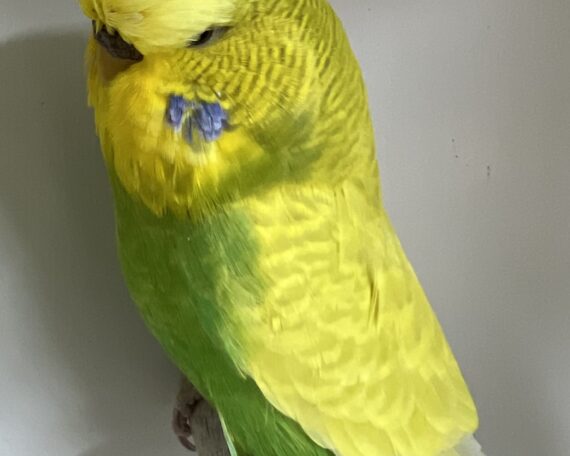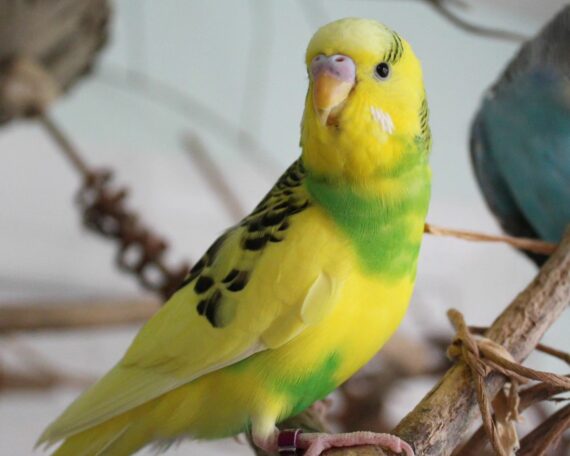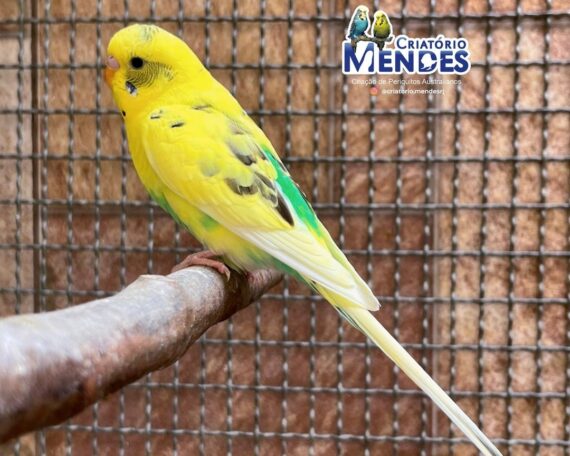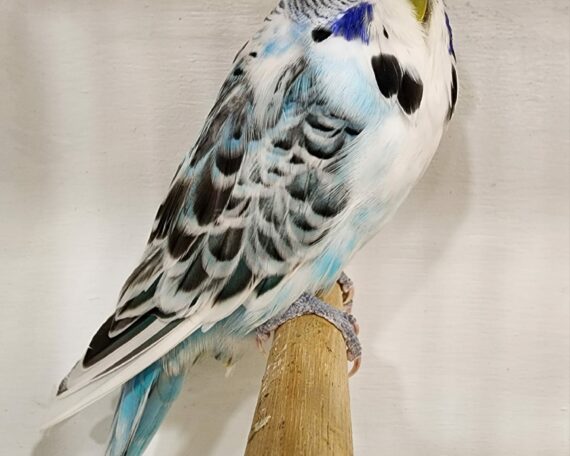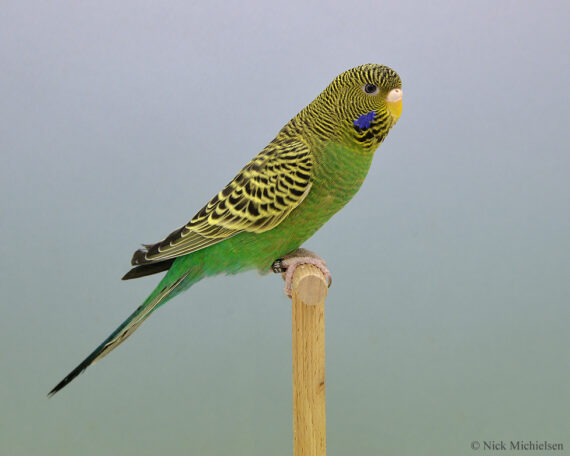Violet Factor Budgie
This dominant mutation was first discovered in Australia in the 1930s, but likely existed for a long time as misidentified Dark Factor. It’s even possible that Violet originally came from wild-caught birds. To the untrained eye, Violets are difficult to identify. In their regular forms, they appear identical to the Dark Factor level “above” them;


